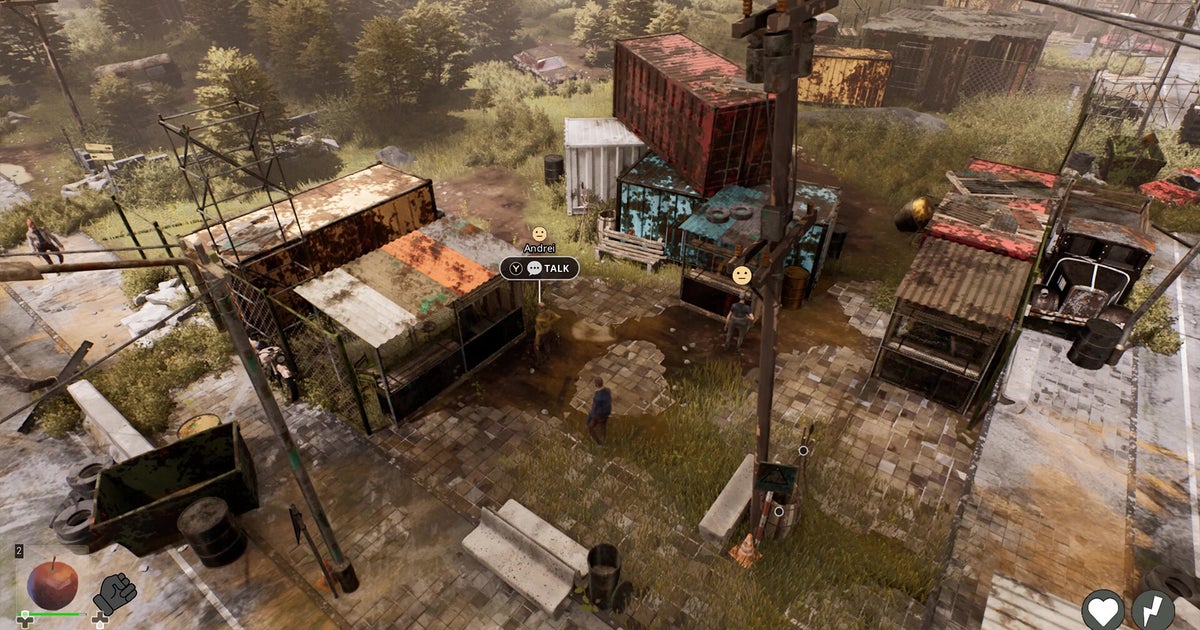The survival game City 20 is a The Sims game set in the world of STALKER
Nowadays, I’m increasingly discouraged by simulations that boast endless butterfly effects. I guess my concern can be boiled down to “a chain of dominoes is still a chain of dominoes, even if it’s 1,000 meters long.” Without the cause for concern provided by narrative or broader thematic and aesthetic considerations, it may all be admirable in its execution, but it also feels like pure technical maximalism – systems for systems’ sake. What do I care if by kicking the first one I can make the 567th domino fall?
Still, I’m very interested in seeing more of City 20. The game has been in development since 2018 and is the work of Untold Games, a studio previously known for VR projects, location-based “immersive experiences” and ports of games like Journey To The Wild Planet. As a mechanic, it’s a top-down sandbox survival experience with a highly reactive environment and procedural storytelling influenced by Rimworld (and not, as the developers claim, created using modern generative AI tools). Meanwhile, as a fictional scenario, it is inspired by Cold War conspiracy theories about Soviet “secret cities” devoted to uranium enrichment and nuclear experiments. The titular City 20 is one of such cities, although it is not a direct recreation. At the beginning of the game, a nuclear accident led to a radiation spike and a partial evacuation: you play as one of the poor suckers who didn’t make it on the last bus out of town.
 City 20 – Feature Trailer
City 20 – Feature Trailer
A few years later, City 20 was cut off and essentially turned into a petri dish in which the full spectrum of human empathy and malice could be seen, where butterfly effects multiply like, well, rabbits that will themselves run around according to the principle of food availability and predatory behavior. A new society has arisen in the quarantine zone, as quarantine zones tend to do – a washed-out Mad Maxian civilization, divided into factions of fringe scientists and former soldiers, with their own belief systems, their own histories of misfortune, and their own ideas about the outside world. The appearance of the place combines references to Eastern European cities with references to Polish painters and science-fiction films from the 1970s and 1980s. There is also a soundtrack with electronic music inspired by Kraftwerk. It’s certainly a multi-layered image, although I’m not sure many of the details will be obvious from the default stratospheric perspective.
Your task is to survive first and then find a way out. To achieve these goals, you will need to negotiate with the people around you, each of whom has needs and desires that trigger a range of daily activities. Take your local baker. They will need wood for their stove, which they can exchange or obtain directly by going to the forest with an axe. Once they fire up the oven, they can open a bakery and flog some loaves to the populace, improving everyone else’s quality of life. If they can’t find wood – perhaps because you’ve already cut down the nearest trees yourself – they will try to meet their needs in other ways. They can, for example, go mushroom picking. If they are injured and killed in some way, for example because of an approaching storm and are stuck in a shelter, the local community will organize a funeral and look for a new baker. Perhaps you will take on this job yourself. Each iteration of City 20 is home to a finite number of citizens, and once they’re gone, they disappear, leaving a hole in the world that can either be filled, compensated, or left to fester.
The relationships between characters also dictate how they behave. A seller who doesn’t really know you may not show you all of their inventory or tell you everything useful about the area. Naturally, you can improve someone’s opinion of you by doing them favors – which may also cause one of their enemies to lose respect for you. Start a fight and bystanders can join in or break up the fight, depending on what they think of the instigators and how brave or foolish they are. The ruling factions have different views on crime and punishment, some issuing fines for infractions, others requiring you to pay your debt to society, and still others simply beating you up on the spot.
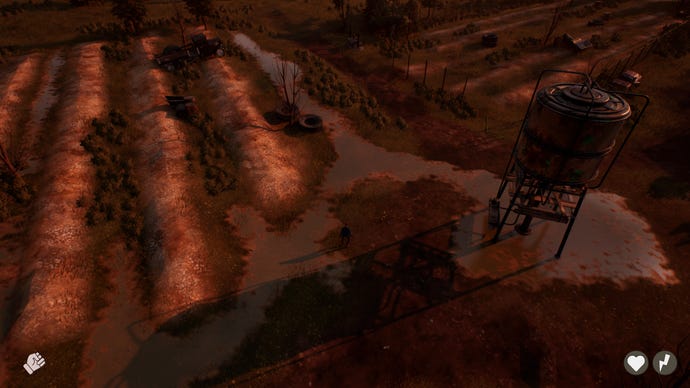
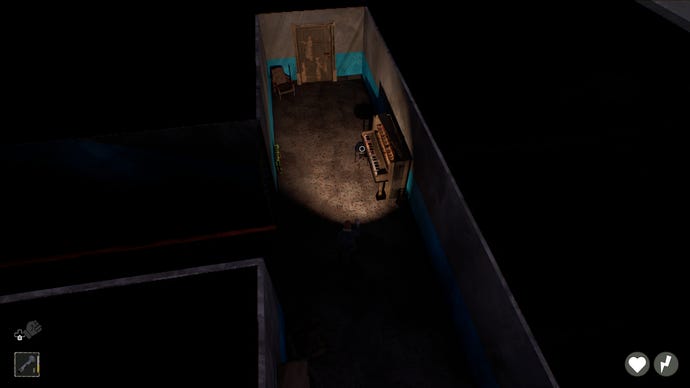
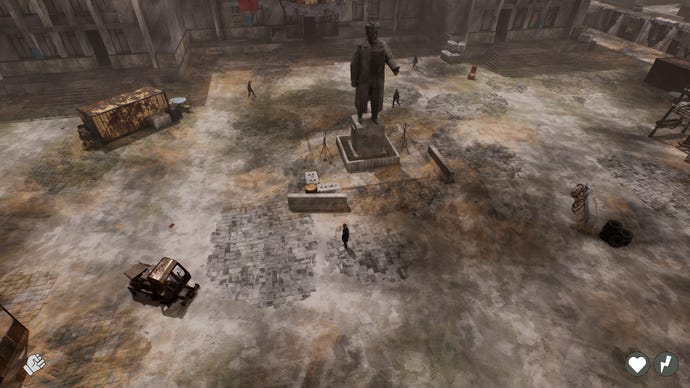
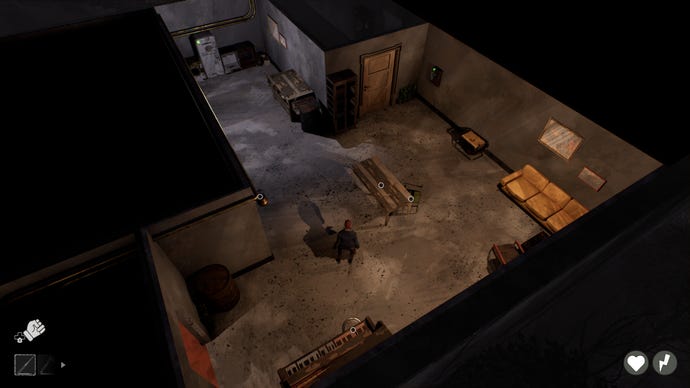
While it can be difficult to keep track of every procedural ricochet, many choices have consequences that are felt strongly around you. If a generator fails, depriving the area of light after sunset, the responsible faction will seek resources to repair it and will send patrols to defend the generator in the future. If you or someone else robs a house, the owner will reinforce the windows. Poison a well and you may come back to find half the inhabitants dead and the well locked.
All of these consequences seem to apply regardless of whether your character is actually present at the time or is asleep in a cabin somewhere. A civil war could break out in the city over some small thing someone did that made everyone upset. Perhaps most fascinating of all is that Untold Games wants to simulate the flow of knowledge, with residents passing on secrets and gossip depending on who they trust. And that’s just human geography: in the wild, there is an overlapping ecosystem of plants that grow from seeds dispersed by other plants, and populations of animals with specific nutritional needs and associated migration patterns.
City 20 will debut in early access this year with two of the four planned factions. The first major update will introduce the correct seasonal cycle of plant growth with associated temperature variables. As a project, it’s certainly a lot, and I suspect that a good portion of the more sophisticated ideas will wither during development. But I applaud the ambition they’re showing, especially from a team that doesn’t have a solid reputation for original design, and I hope that all of these moving parts will result in stories that feel like more than just another domino waiting to fall this fall .
